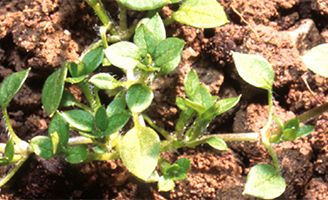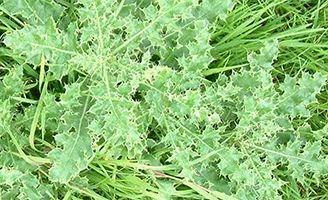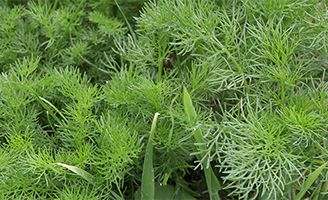Establishing a productive ley depends on a good seedbed, adequate nutrients, and effective weed control to prevent early competition and ensure uniform growth.
New Sown Leys

Reseeding as an important part of grassland management
Reseeding is an important part of grassland management, and is essential for maintaining productive grassland.
Average costs for a reseed are between £400-£700 per hectare, so it is important to do it correctly. The current best practice advice can be found in the AHDB Grassland Reseeding Guide.
Find out more about weed control in new sown leys.
When to reseed - autumn or spring?
There are two key timings to look at establishing grass in the UK - autumn (August to October) and spring (March to May), with autumn being the most common time to reseed. Successful establishment can be achieved at either timing, and there are advantages and disadvantages to each time of year.
|
Autumn |
Spring |
Advantages |
Minimal impact on grazing as land not taken out of production at peak growth times Seedbed has time to settle over winter, allowing good structure to form Good weed control if done early and you catch weeds when they are still actively growing
|
Higher probability of good conditions for establishment As grass is actively growing it can better out-compete weeds No heading in first season
|
Disadvantages |
Significant weed competition from late reseeds Narrower window for good establishment
|
Losing peak growth by taking field out of production at this time Soil does not have time to settle before carrying stock.
|
More detailed information on autumn reseeds can be found in the AHDB article - Now is the time for autumn reseeds.
Weed control in new sown leys
The key to successful establishment of a new ley is of course ensuring a good seedbed and adequate pH and nutrient availability, and choosing a suitable variety, but once the grass is sown, keeping weeds out becomes equally important. Early competition from vigorous weeds such as chickweed and mayweed can rapidly reduce the growth of grass and leave new leys ‘gappy’ and unproductive. An uneven grass ley can take a considerable time to become fully productive.
Tackling grassland weeds early, at establishment of a new grass ley, will help improve sward palatability, productivity and reduce costs. As any form of soil cultivation will disturb the weed seedbank and encourage germination of weed seeds, it is important to check new leys regularly for weed infestations.
The most common weed issues after reseeding are chickweed, docks and thistles. However, a wide range of perennial and annual weeds will take advantage of warm temperatures and a moist seedbed to germinate, including mayweed, shepherds purse, annual meadow grass, red shank and pansy. Weed seedlings are more susceptible to herbicides than mature plants and are cheaper and easier to control at this stage.
Many grassland herbicide products dictate that grass should be ’established’, i.e. over a year old at the time of treatment. However, Corteva Agriscience has two selective herbicides for use in new sown leys - Leystar™ and Envy™ for application from as early as when three grass leaves have appeared.
Leystar™ can be applied to new sown leys at 1.0 L/ha from 1st February to 31st August, and so is suitable for use on spring established new sown leys. Envy™ can be applied to new sown leys at 1.5 L/ha from 1st February to 30th November and so can be used on both autumn and spring established new sown leys.
Leystar™ and Envy™ are not safe to clover, but clover can be stitched in 3 months after application.
Products for use in new sown leys
Envy®
Envy is an excellent solution for weed control in newly sown leys, particularly where docks are growing from root fragments.
Leystar®
Leystar® is a selective herbicide for use in newly sown leys, established grassland, grass for seed, forage maize, cereals and cereals under/sown with grass.
Common weeds in new sown leys


Curled docks
Curled docks thrive in intensively used and highly fertilised grassland and produce up to 40,000 seeds.
Read more
Thistles
Thistles compete with grass for space, light, nutrients and water, and they are unpalatable to stock.
Read more
Mayweed
There are several widely distributed species including Scented Mayweed, Scentless Mayweed and Pineappleweed.
Read more